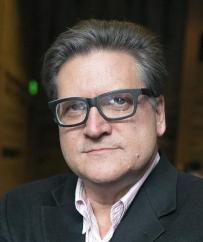With the richest 10 percent of people in the US owning 87 percent of its equity, California Senate Majority Leader Bob Hertzberg proposes "universal basic capital." In this op-ed, appearing originally in the LA Times and republished by TPR with permission, Sen. Hertzberg argues for addressing wealth inequality with a state program—like Governor Newsom's proposal to create and fund college savings accounts for low-income children—to foster an ownership share for all Californians in the wealth produced here. A state wealth fund, he argues, could give all Californians a literal stake in the state’s future prosperity by leveraging surpluses in the coming years, along with supplemental budget allocations, to build capital assets for everyone. Find the op-ed on the LA Times website, here.

Bob Hertzberg
"Though held in public trust, the wealth fund accounts would be owned by individuals and asset growth would accrue to them. Within certain vesting and withdrawal limitations, these assets could be used for retirement, education, building a house, healthcare or even for start-up capital for a new business."
California is a stunningly wealthy state whose riches are driven by the hard work of millions, world-class private and public higher education institutions, publicly traded companies worth $13 trillion and a culture of entrepreneurship and innovation.
But as we all know, our wealth is far from equitably shared. The equality gap continues to grow, especially between those who own capital assets that appreciate in value and those who work and live paycheck to paycheck. The richest 10% own 87% of all equity in the U.S.
One way to start closing this gap is with a program to foster an ownership share for all Californians in the wealth produced here. We call the concept universal basic capital.
Gov. Gavin Newsom has introduced something along these lines in his 2021-22 revised budget, which will be finalized Tuesday. He proposes to use some of this year’s remarkable tax surplus — which, along with federal COVID recovery, has flooded the budget coffers with as much as $100 billion — to open a college fund account for every low-income first-grader in California public schools, starting with $500 for each child. The money, pooled and invested together, would increase in value until it could be withdrawn to pay for postsecondary education.
Why not make Newsom’s college fund idea a template for a much broader initiative in the coming years? A state wealth fund could give all Californians a literal stake in the state’s future prosperity. Surpluses in the coming years, along with supplemental budget allocations, could be leveraged to build capital assets for everyone.
To get an idea of the possibilities, let’s say each Californian 18 or older got an initial deposit of $1,000 in a personal account. Invested — including by taking early shares in California start-ups — the value of millions of $1,000 deposits would grow over time just as investments do for the richest in our society. Just imagine if such a program had been in place 10 years ago. According to the online brokerage EToro, a $1,000 investment in 2011 in Tesla would now be worth $85,101; in Facebook, $14,147; in Apple, $12,957.
Though held in public trust, the wealth fund accounts would be owned by individuals and asset growth would accrue to them. Within certain vesting and withdrawal limitations, these assets could be used for retirement, education, building a house, healthcare or even for start-up capital for a new business.
The state could set up the initial accounts with a significant allocation of future surpluses, but seed contributions in cash or stock would also come from California businesses and philanthropists, in exchange for the kind of tax relief they get for a donation to, say, a university endowment. And over time, account holders would contribute as well.
Although designed to finance more than retirements, a California wealth fund could be organized like the state’s CalSavers plan, created in 2016 so that those who don’t otherwise have access to a 401(k) can still get enrolled in and contribute to a personal retirement savings account. The money deposited in individual CalSavers accounts is professionally managed by private-sector financial firms with oversight from a public board chaired by the state treasurer. Contributions and gains are socked away tax free (in most cases) until they are withdrawn, with the pooled assets diversified to balance risks and gains.
It may be controversial to suggest redirecting much the state’s surpluses toward the creation of individual investment accounts. We think the advantages of building equity for all Californians should be clear. Using state surpluses for one-off aid such as tax rebates or even boosting traditional aid programs, whatever their merits, are patchwork, short-term fixes. A California wealth fund, on the other hand, can grow to pay dividends long term. Which approach has a better chance at changing the fundamental dynamic of wealth inequality?
Would business and philanthropists contribute? Some California tech companies have already shown a preference for meeting public needs with wealth-generating assets.
Snap Inc., for example, has assigned 3% of its equity value — $3 billion at the present valuation of $100 billion — to endow a fund devoted to preparing pathways into the creative economy for underprivileged kids in Southern California. In the philanthropic space, Schmidt Futures and the Ford Foundation co-founded the Families and Workers Fund in 2020 to help those hardest hit by the COVID-19 pandemic. Dozens of diverse corporations have joined, building a $100-million endowment for the fund.
Many compelling causes will always want a share of California’s surplus revenues. We suggest that spreading equity to everyone in the state is among the most worthy. Universal basic capital would invest in California’s future and directly confront the state’s massive wealth imbalance. If we leverage the surpluses to come thoughtfully, we won’t need to resign ourselves to the inequality-gap status quo.
- Log in to post comments



